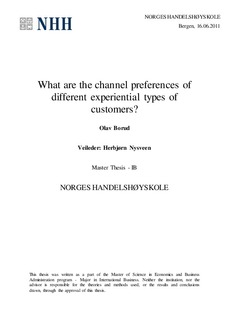| dc.description.abstract | Experiences occur every time a customer interacts with a company, and can be either positive or negative. When positive, experiences can lead to an increase in customer satisfaction and loyalty. By decomposing the ambiguous term “experience” into manageable dimensions that are more tangible and easier to understand, companies could seek to take advantage of the fact that their customer base likely is diverse and made up by different people which have their own unique preferences in regards to what type of experiences they favor. Catering to different type of customers could for instance be done by examining if a company‟s service channels differ by appealing to different types of experiential groups of customers, with a special focus cost effective self-service technology channels.
This thesis provides an overview on the existing literature the customer experience concept and follows it up by categorizing a selection of consumers of telecommunications services in Norway based on their experiential preferences and examines differences between the groups with regards to channel preference. I find that there are indeed differences between what type of experiences a consumer prefer and the type of channel that the same consumer prefers to use.
Marketers could benefit by choosing to explore their customers‟ experiential profiles and achieve higher accuracy when designing appropriate channel mixes to suit their customer needs. | en |
